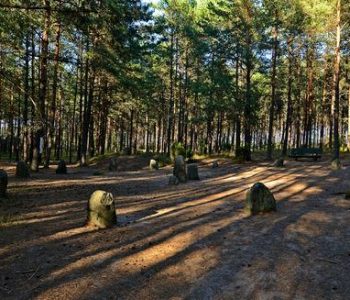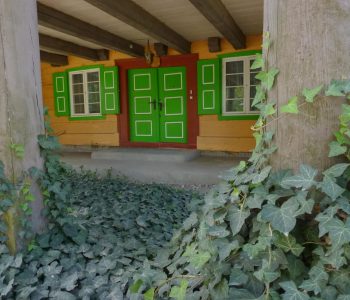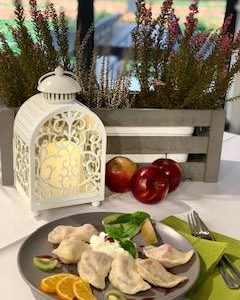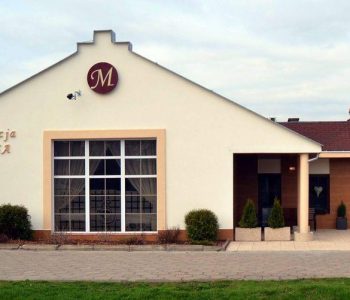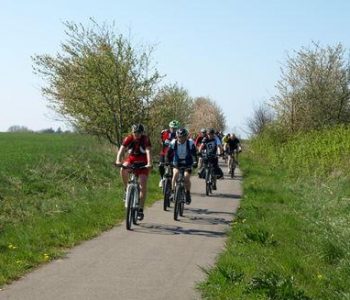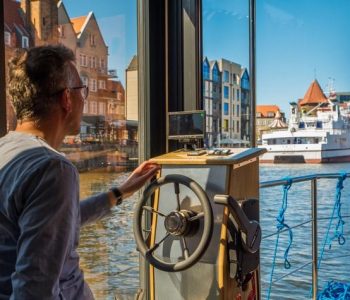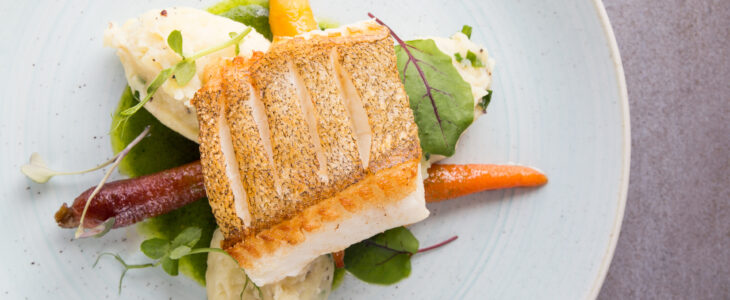The Black Wedding presented in the Museum refers to this age-old tradition. Its basic assumption is to present the simple technique of peat digging, used in the 19th Century on the boggy terrains around the Gardno and Łebsko lakes. And so, on meadows near farmsteads, one can see men who, after removing the turf and the top soil layer, use knives to slice a block of peat and cut off equal, brown and black cubes. After drying in the sun, they are taken to farmsteads and put under eaves.
Placing labourers in the exhibition area (the peat bog) and presenting the consecutive stages of their work allows visitors to understand the hardship and importance of this activity – they see how much time and effort it took to cut thousands of equal peat cubes, transport them to a sunlit meadow, and arrange them in such a way as to make sure that, by the next autumn, they would dry off.
While peat digging is the focal point of the Black Wedding, the whole museum exhibition, revolving around the “countryside” theme, becomes enlivened. Men and women in farmsteads engage in daily activities resulting from the needs and conditions characteristic of the 19th-Century Slovinian village. One household then spins threads and weaves ribbons, and another makes baskets, mends nets and prepares binders, all this to the accompaniment of woodworking saws and water splashes at the pump during laundering. The Black Wedding perfectly supplements the Museum’s permanent exhibition by making it more authentic, as all the exhibits have practical applications. The peat is used as fuel for the kitchen stove; you will fry a waffle in the cast-iron waffle maker (following the recipe on its cover; laundering can be done with the washboard and the so-called “bell”; the pump provides water; and the horses wear real wooden shoes called “klumps”. Thanks to these attractions, a visit to this open-air village museum becomes a journey in time and space, a feeling further intensified by visitors’ attempts to carry out some of these tasks unaided. Watching tools and devices that are still operational, but not used anywhere else, evokes childhood memories in seniors, whereas children get to know something completely new and exciting.
The farmsteads exude the aroma of baked bread and fried yeast waffles, with folk music everywhere – the Kashubian bands invited to perform here play, sing, and dance on every farm. And after work, a stroll or some physical effort, the Slovinian żur soup and bread with dripping served outdoors will simply enchant your palate. You can continue feasting just around the corner, at the catering facilities of the Slovinian Regional Culture Centre, which also hosts a fair of folk and amateur art and craftsmanship. This unique event takes place annually, on 1, 2, and 3 May. Nowadays, the singular atmosphere of the 19th-Century Slovinian countryside can only be found in Kluki.
More information: Czarne Wesele

